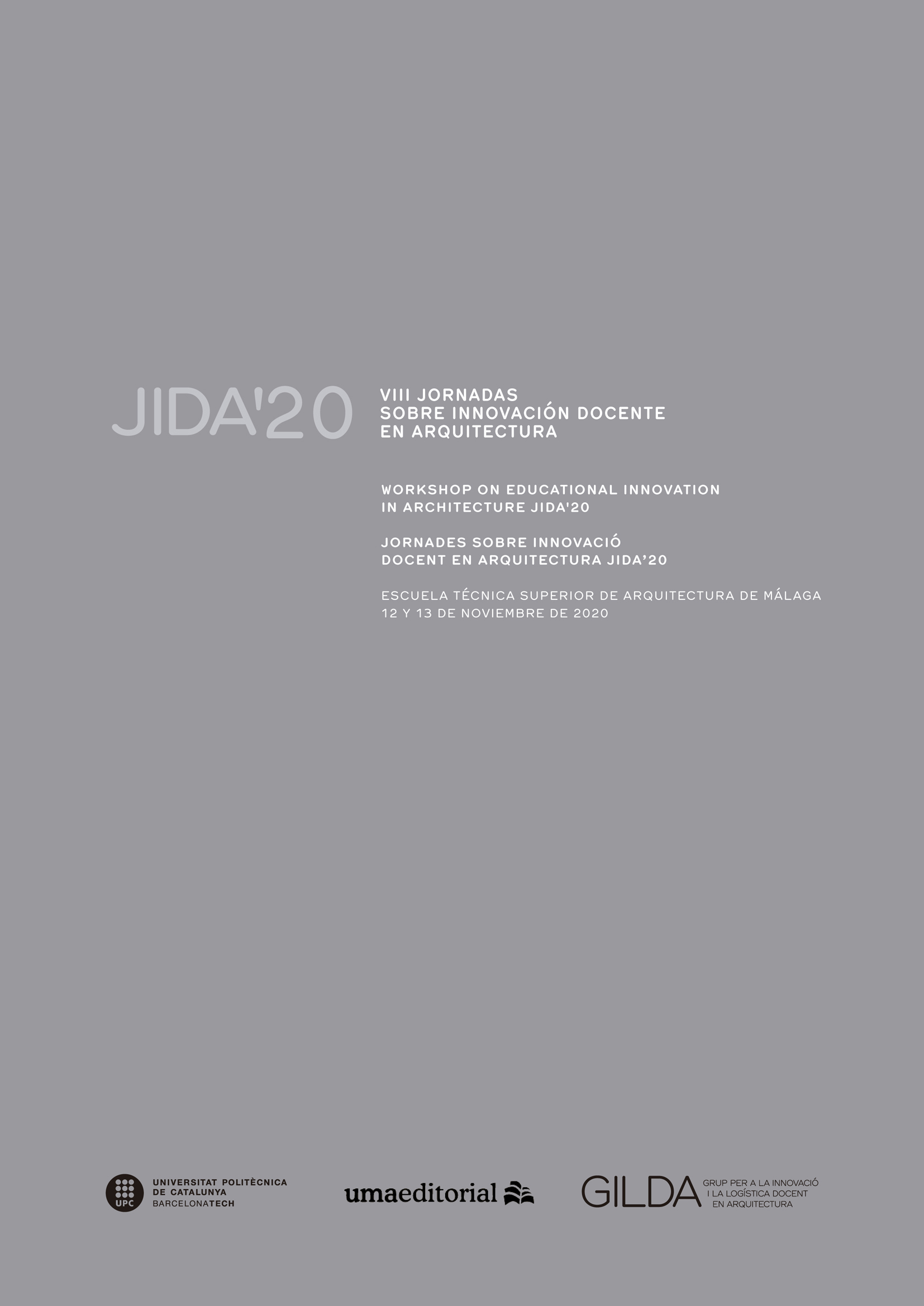De la clase-basílica al mapa generativo: las redes colaborativas del nativo digital
DOI:
https://doi.org/10.5821/jida.2020.9411Resumen
El objeto de este artículo es una reflexión en torno a la necesidad de tomar consciencia de las carencias que el espacio físico y el aula tradicional imponen en la educación de una generación criada bajo la cultura digital. Esta experiencia docente estudia las posibilidades que otorga el desplazamiento desde un formato físico y rígido, como es el aula tradicional, a un escenario virtual y dinámico, como lo es el mapa generativo.
Citas
ADELL SEGURA, J; CASTAÑEDA QUINTERO, L. (2010). “Los Entornos Personales de Aprendizaje (PLEs): una nueva manera de entender el aprendizaje†en Roig-Vila, R; Fiorucc, M. (Eds.) Claves para la investigación en innovación y calidad educativas. La integración de las TecnologÃas de la Información y la Comunicación y Interculturalidad en las aulas. (2010) Alcoy: Marfil.
ALDERETE, V. (2017). “The Age of Prosumerism: Some Micro-Economic Analysis†en Journal of Theoretical and Applied Electronic Commerce Research. Talca. Septiembre de 2017, vol 12, n.o 3: 1-12. https://doi.org/10.4067/S0718-18762017000300002.
BOURRIAUD, N. (2007). Postproducción: La Cultura Como Escenario, Modos En Que El Arte Reprograma El Mundo contemporáneo. Buenos Aires: Adriana Hidalgo.
CASTAÑO GARRIDO, C. (2008) “Educar con redes sociales y web 2.0†en Eduweb. Universidad de Carabobo Ed. Vol. 2, Nº. 2 , págs. 33-50
CABERO ALMENARA, J.; GUTIERREZ CASTILLO, JJ. (2015). “La producción de materiales TIC como desarrollo de las competencias del estudiante universitario†en Aula de encuentro. Universidad de Jaén, volumen 2(17), 5-32.
KIRSCHNER, P.; DE BRUYCKERE, P. (2017). “The Myths of the Digital Native and the Multitasker†en Teaching and Teacher Education. Nº 67: 135-42. Recuperado el 07 de Julio de 2020 de https://doi.org/10.1016/j.tate.2017.06.001.
MICROSOFT. (2015). “Attention Spans. Consumer Insights, Microsoft Canadaâ€. Recuperado el 23 de Julio de 2020 de https://dl.motamem.org/microsoft-attention-spans-research-report.pdf.
O’REILLY, T. (2005). “Qué es web 2.0. Patrones del diseño y modelos del negocio para la siguiente generación del software†Recuperado el 07 de Julio de 2020 de O'Reily Media: http://www.oreilly.com/pub/a/web2/archive/what-is-web-20.html
PATINO, B. (2020) La civilización de la memoria de pez. Madrid: Alianza.
PERY BARLOW, J. (2016). “Declaración de independencia del ciberespacio†en Periférica Internacional. Revista Para El análisis De La Cultura Y El Territorio, Nº 10: 241-242. Recuperado el 27 de Junio de 2020 de https://revistas.uca.es/index.php/periferica/article/view/943
PRENSKY, M. (2001). “Digital Natives, Digital Immigrants†en On the Horizon. NCB University Press, vol 9, n.o 5: 6. Recuperado el 15 de Junio de 2020 de https://marcprensky.com/writing/Prensky - Digital Natives, Digital Immigrants - Part1.pdf
PRENSKY, M. (2001). “Do They Really Think Differently?†en On the Horizon. NCB University Press, vol 9, n.o 6: 9. Recuperado el 15 de Junio de 2020 de https://www.marcprensky.com/writing/Prensky - Digital Natives, Digital Immigrants - Part2.pdf
SUROWIECKI, J. (2005). Cien mejor que uno: la sabidurÃa de la multitud o por qué la mayorÃa siempre es más inteligente que la minorÃa. Barcelona: Urano.
ZAFRA, R . (2010). Un cuarto propio conectado (ciber)espacio y (auto)gestión del yo. Madrid: Fórcola.






















